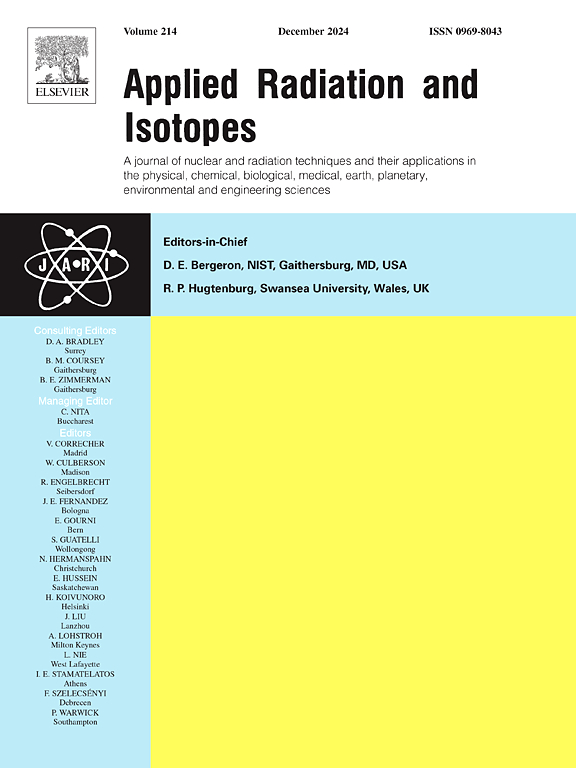In situ electrochemical synthesis of copper-zinc ferrocyanide for removal of cesium in simulated liquid radioactive wastes
IF 1.6
3区 工程技术
Q3 CHEMISTRY, INORGANIC & NUCLEAR
引用次数: 0
Abstract
This study employed in situ electrochemical synthesis of copper-zinc ferrocyanide (CuZnFC) to effectively remove Cs+ from simulated liquid radioactive wastes (LRWs). Through single-factor experiments, the optimal reaction conditions were established as follows: an initial pH of 8.0, a molar ratio of [Fe(CN)6]4- to Cs+ of 10:1, a reaction temperature of 25 °C, a current density of 6 mA·cm−2, and a stirring rate of 400 r·min−1, achieving a Cs+ removal rate of 99.978 %. The precipitate analysis revealed its composition as CuZn[Fe(CN)6]·6.18H2O, which exhibited a cubic crystal structure and rapidly absorbed Cs+ from the simulated liquid radioactive wastes.
铜锌亚铁氰化物原位电化学合成去除模拟放射性液体废物中的铯
本研究采用原位电化学合成亚铁氰化铜锌(CuZnFC)的方法,有效去除模拟液态放射性废物(LRW)中的 Cs+。通过单因素实验,确定了最佳反应条件:初始 pH 值为 8.0,[Fe(CN)6]4- 与 Cs+ 的摩尔比为 10:1,反应温度为 25 °C,电流密度为 6 mA-cm-2,搅拌速率为 400 r-min-1,Cs+ 去除率达到 99.978 %。沉淀分析显示其成分为 CuZn[Fe(CN)6]-6.18H2O,呈立方晶体结构,能快速吸收模拟液态放射性废物中的 Cs+。
本文章由计算机程序翻译,如有差异,请以英文原文为准。
求助全文
约1分钟内获得全文
求助全文
来源期刊

Applied Radiation and Isotopes
工程技术-核科学技术
CiteScore
3.00
自引率
12.50%
发文量
406
审稿时长
13.5 months
期刊介绍:
Applied Radiation and Isotopes provides a high quality medium for the publication of substantial, original and scientific and technological papers on the development and peaceful application of nuclear, radiation and radionuclide techniques in chemistry, physics, biochemistry, biology, medicine, security, engineering and in the earth, planetary and environmental sciences, all including dosimetry. Nuclear techniques are defined in the broadest sense and both experimental and theoretical papers are welcome. They include the development and use of α- and β-particles, X-rays and γ-rays, neutrons and other nuclear particles and radiations from all sources, including radionuclides, synchrotron sources, cyclotrons and reactors and from the natural environment.
The journal aims to publish papers with significance to an international audience, containing substantial novelty and scientific impact. The Editors reserve the rights to reject, with or without external review, papers that do not meet these criteria.
Papers dealing with radiation processing, i.e., where radiation is used to bring about a biological, chemical or physical change in a material, should be directed to our sister journal Radiation Physics and Chemistry.
 求助内容:
求助内容: 应助结果提醒方式:
应助结果提醒方式:


